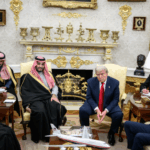
The U.S. has approved $325 million in new weapons aid for Ukraine, which arrives as a group of Republican lawmakers affirmed their opposition to further security assistance funding for Kyiv. The new presidential drawdown package, with capabilities to be provided from existing Pentagon inventories, includes RTX’s [RTX] AIM-9M missiles, additional ammunition for Lockheed Martin [LMT]-built HIMARS launchers, Boeing’s [BA] Avenger air defense systems, and more DPICM cluster munitions. Ukraine will also receive .50 caliber machine guns “to counter unmanned aerial…

 By
By 











